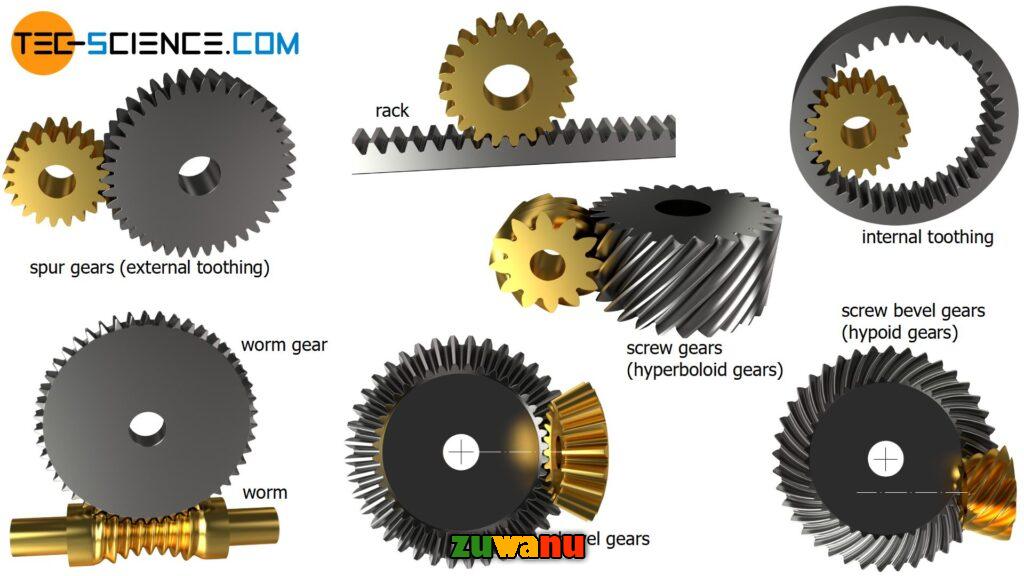The Mechanics of Gears: A Comprehensive Exploration
Table of Contents
I. Introduction to Gears:

Gears, the silent workhorses of machinery, have long been integral to human innovation. These mechanical marvels, evolving over centuries, seamlessly facilitate a multitude of tasks across various industries and domains. This article embarks on a journey to demystify gears, delving into their definition, applications, diverse types, and evaluating their advantages and limitations.
II. Understanding Gears:
At its essence, a gear is a toothed wheel intricately interlocking with another toothed mechanism to transmit motion. Serving as fundamental components in most mechanical systems, gears proficiently convert rotational motion into linear motion and vice versa. Their omnipresence spans from everyday items like clocks and bicycles to complex automotive and manufacturing machinery.
Uses of Gears:
Clocks and Watches:
Gears function as unsung heroes within timekeeping devices, regulating hand movements with precision and ensuring accurate timekeeping over extended periods.
Automobiles:
In the automotive realm, gears play a pivotal role in transferring power from engines to wheels. Varied gear arrangements in gearboxes facilitate speed variation and torque optimization, evident in manual, automatic, and continuously variable transmissions.
Machinery and Manufacturing:
Gears are ubiquitous in machinery and manufacturing processes, aiding in the smooth operation of conveyor belts, production lines, and diverse equipment. They exert control over speed, direction, and torque in these critical applications.
Bicycles:
Enhancing pedaling efficiency, gears in bicycles enable cyclists to adjust resistance levels, simplifying hill ascents and enhancing speed on flat terrain.
Power Tools:
Integral to the functionality of power tools like drills and saws, gears regulate speed and force, ensuring precision and control in various tasks.
III. Types of Gears:

Gears manifest in various forms tailored to specific purposes:
Spur Gears: Simple and common, featuring straight teeth parallel to the gear’s axis, ideal for a wide range of applications.
Helical Gears: With angled teeth providing smoother and quieter operation compared to spur gears, they find utility where noise reduction and increased load capacity are paramount.
Bevel Gears: Utilized for transmitting motion between intersecting shafts, commonly found in differentials to ensure smooth power transmission between perpendicular axes.
Worm Gears: Comprising a worm and worm wheel, these gears offer high gear reduction ratios, suitable for applications demanding substantial torque.
Planetary Gears: Also known as epicyclic gears, featuring a central sun gear surrounded by planet gears and an outer ring gear, offering compact and efficient gearing solutions, notably in automatic transmissions.
Rack and Pinion: Converting rotary motion into linear motion, this system is prevalent in steering mechanisms and linear actuators.
Internal Gears: With teeth on the inside surface, facilitating unique applications where gears must mesh within confined spaces, commonly used in planetary gear systems.
IV. Pros and Cons of Gears:
Pros:
a. Mechanical Efficiency: Renowned for high mechanical efficiency, gears transmit power with minimal energy loss, crucial for energy-intensive applications.
b. Versatility: Adaptable to diverse applications, different gear types suit specific requirements, whether precision at high speeds or high-torque demands.
c. Precise Speed Control: Enabling precise speed control, gear ratios optimization enhances performance for various tasks.
d. Compact Design: Many gear systems, particularly planetary gears, offer a space-efficient design, advantageous where space constraints are significant.
e. Load Distribution: Evenly distributing loads across teeth reduces wear and tear, ensuring longevity and reliability in mechanical systems.
Cons:
a. Noise and Vibration: Gears may generate noise and vibrations, undesirable in applications where quiet operation is crucial.
b. Complex Maintenance: Intricately designed gear systems may pose challenges in maintenance, necessitating regular lubrication and inspections for optimal performance.
c. Limited Efficiency at Extreme Conditions: Extreme conditions like high temperatures or heavy loads may lead to reduced gear efficiency due to increased friction and wear.
d. Cost and Complexity: Precision designing and manufacturing of gears can be costly, requiring specialized knowledge for assembly and maintenance, adding to complexity.
e. Limited Efficiency in Non-Parallel Shafts: Gears exhibit optimal efficiency in parallel shafts; however, additional components like bevel gears introduce inefficiencies in non-parallel shaft applications.
V. Future Trends in Gear Technology:
As technology progresses, gear technology evolves, with several trends shaping its future:
Smart Gearing Systems: Integration of sensors and smart technologies enhances gear systems’ monitoring and performance adjustment capabilities in real-time, reducing downtime.
Advanced Materials: Ongoing research in materials science results in stronger, lighter, and more durable gear materials, enhancing performance and efficiency.
Additive Manufacturing: Revolutionizing gear production, 3D printing enables the creation of custom-designed gears with optimized performance characteristics.
Green Gearing: With sustainability in focus, efforts are directed towards developing gears with eco-friendly materials and manufacturing processes, reducing environmental impact.
Nanotechnology in Lubrication: Exploration of nanotechnology for advanced lubricants enhances gear efficiency and lifespan by minimizing friction and wear.
VI. Conclusion:
Gears epitomize human ingenuity and mechanical engineering evolution, from ancient clock mechanisms to modern automotive transmissions. Their diverse applications across industries underscore their versatility and indispensability.
Looking ahead, ongoing advancements in materials, manufacturing, and smart technologies promise to redefine gear capabilities. With a focus on sustainability and efficiency, the future of gears holds exciting possibilities across various applications. Whether in the precision movements of watches or the power transmission of electric vehicles, gears will undoubtedly remain vital to propelling our world forward.

